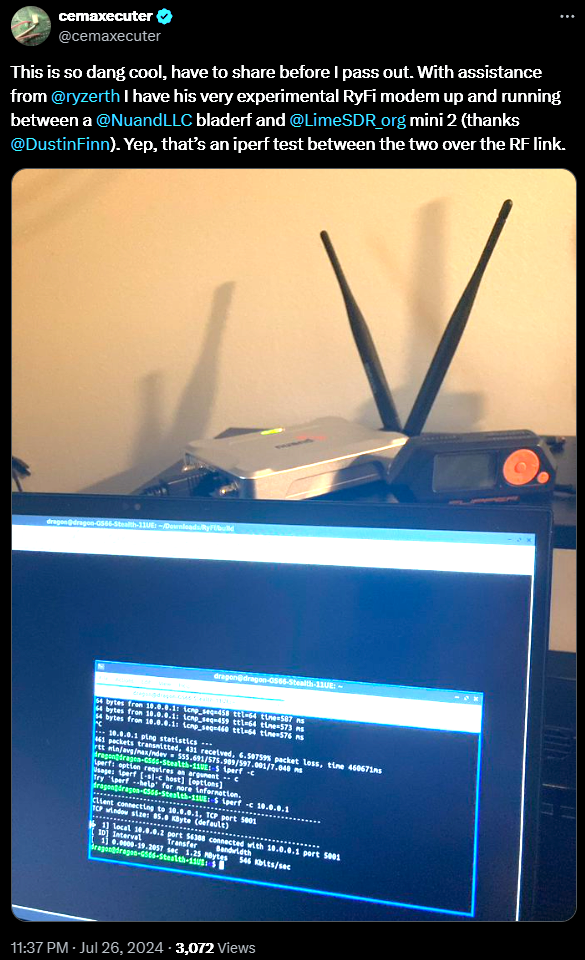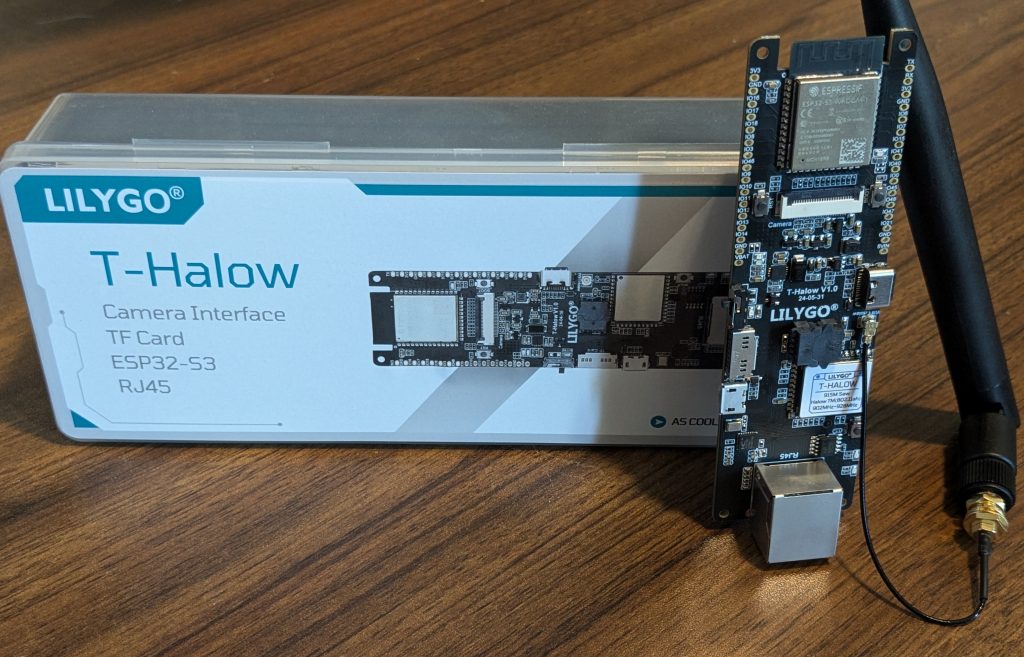This week in DragonOS…
Highlight of the Week: RyFi Custom Modem…
Highlight of the Week: RyFi Custom Modem
Ryzerth, developer of SDR++, released RyFi last week. Here is his post on X announcing its release, as well as the modulation schemes, observed data rates, and error correction mechanisms: https://x.com/ryzerth/status/1816209802856652944

RyFi currently supports the Limesdr and BladeRF (just uncomment this line and comment out the LimeSDR line). RyFi goes a step further than other RF modems by using a TUN interface to enable a network interface ryfi0 to appear under your network interfaces. This will let you handle the custom RF medium in the same way you handle Wi-Fi and Ethernet. In his post on X, Ryzerth even showed a client loading web pages from a server over RyFi! Looking at the GitHub repository, it seems like RyFi can run on Windows as long as PothosSDR is installed, but it is also supported on Linux and DragonOS. Here is Cemaxecuter conducting an iperf test between a BladeRf and LimeSDR: https://x.com/cemaxecuter/status/1817041602977681800

RyFi is still under development, but you can find the GitHub repository here: https://github.com/AlexandreRouma/ryfi. Please use at your own risk in a controlled environment if you are interested in playing around with RyFi yourself.
Hands on with the T-HaLow

The T-HaLow is a device produced by LilyGo that aims to provide a Wi-Fi HaLow bridge for devices via an Ethernet interface. The T-HaLow has some promise for the WarDragon, which currently uses the Alfa HaLow-U as an optional Wi-Fi HaLow bridge. The T-Halow is almost 1/4th the price of the HaLow-U and seems to offer similar functionality, but after picking up two T-HaLow’s, Cemaxecuter had some trouble getting the devices to work out of the box. Follow along with the initial setup issue on GitHub.
For those that also might be interested in the T-HaLow, it is probably best to wait until LilyGo and the developers release a video on the usage of the devices. It is possible that users might need a flash programmer to get the devices to work which would reduce the relative cost of the T-HaLow to the HaLow-U. On the plus side, the developers of the T-HaLow are quick to respond and are trying to help resolve the issue. Hopefully some open-source collaboration will be able to resolve the issues with the T-HaLow in the future. If you are curious about Wi-Fi HaLow and other devices that support this protocol, Ben Jeffrey produced a good video on YouTube a couple of months ago that does a good job reviewing link distance and speeds for a couple of different devices.
Explore More With DragonOS
- DragonOS Source for x86_64 systems: https://sourceforge.net/projects/dragonos-focal/
- Download the latest release of DragonOS for x86_64 systems, ask for support, and read about the history of DragonOS.
- DragonOS Source for Pi64 systems: https://sourceforge.net/projects/dragonos-pi64/
- Download the latest release of DragonOS for Pi64 systems, ask for support, and read about the history of DragonOS.
- Cemaxecuter on YouTube: https://www.youtube.com/channel/UC9U2kaqhE716J2WNSTcOghg
- Follow along with Cemaxecuter himself as he walks you through how to use specific SDR tools within DragonOS and explains why they are valuable.
- DragonOS Discord Channel: https://discord.com/invite/cYuS3E3k
- Join the community of DragonOS users to share your work, ask for help, or lurk for content
- Cemaxecuter on X: https://x.com/cemaxecuter
- Recent updates from the creator of DragonOS
- DragonOS Patreon: https://www.patreon.com/cemaxecuter
- 100% of contributions fund advanced features, videos, and hardware. As a thank you, Cemaxecuter will ask for your feedback on experimental features.
- For collaboration please contact cemaxecuter directly at cemaxecuter@protonmail.com